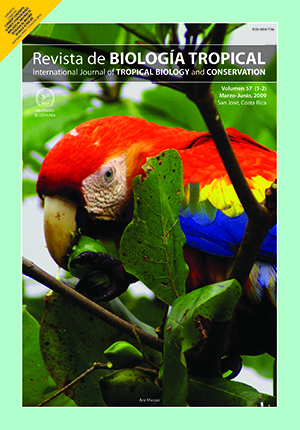Abstract
The “talares” in eastern Buenos Aires province, Argentina, are coastal xerophitic forests structured by few arboreal species surrounded by a lower and moister soil matrix. We studied the reproductive parameters of the most representative arboreal species (Celtis tala, Scutia buxifolia, Jodina rhombifolia,and Schinus longifolia). Pollen dispersion was studied through floral visitor traps (biotic dispersion) and using gravimetric pollen collectors (abiotic dispersion). The reproductive success (fruit formation rate) of the focal species was studied by enclosing flowers with different mesh bags. The reproductive system varied among the different species. C. tala was anemophilous and selfcompatible. S. buxifolia was entomophilous and floral visitors dependant. J. rhombifolia was entomophylous, although spontaneous autogamy could favor reproduction in the absence of pollinators. Lastly, S. longifolia could be an ambophilous species (pollinated by insects and by the wind). This dual system may be the result of system flexibility mechanism or an evolutionary transition.##plugins.facebook.comentarios##

This work is licensed under a Creative Commons Attribution 4.0 International License.
Copyright (c) 2009 Revista de Biología Tropical
Downloads
Download data is not yet available.






